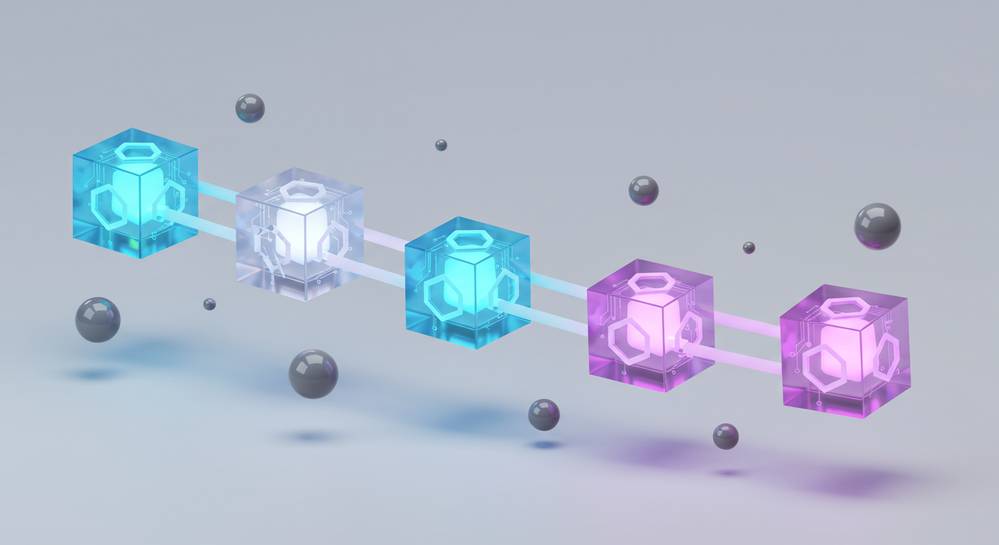The term blockchain is everywhere, but what does it actually mean? In simple terms, a what is a blockchain is a distributed digital ledger that is completely secure and unchangeable. It is the core technology that makes cryptocurrencies like Bitcoin possible, but its potential goes far beyond digital money. This guide breaks down the concept into easy-to-understand parts, explaining how it works and why it is considered so revolutionary for the future.
Understanding the basics of blockchain technology

What is a blockchain?
At its core, a blockchain is a specific type of database, best described as a distributed and immutable digital ledger. Think of it as a shared digital notebook duplicated across a vast network of computers. Each new entry, or transaction, is grouped into a block of data. Once full, this block is cryptographically linked to the previous one, forming a chronological chain. This unique structure is what makes the system incredibly secure and tamper-proof without a central authority.
This technology stands on two key pillars: decentralization and immutability. Decentralization means the ledger is copied across many computers, eliminating single points of failure and control. Immutability, achieved through cryptographic hashing, ensures that once a transaction is recorded, it cannot be altered. This permanent and transparent record is the foundational innovation behind applications like Bitcoin.
- Block: A record containing a batch of new, validated transactions, such as payments or supply chain data.
- Chain: The cryptographic connection that links all blocks together in an unchangeable, chronological order.
How does a blockchain work step by step

A blockchain functions through a precise sequence of events for every new transaction. This workflow ensures each addition to the digital ledger is secure, verified, and permanent. While the underlying technology is complex, the process follows a logical path validated by the entire network. This method is central to what a blockchain is and why it is so resilient against tampering.
The journey of a transaction from initiation to confirmation involves several key stages:
- Transaction Request: A user initiates a transaction, which is bundled with others into a new, unconfirmed block.
- Network Broadcast: This new block is sent to all participants, or nodes, across the distributed network.
- Validation by Consensus: Nodes check the block’s validity using consensus rules. This step, often involving a process like undefined, confirms the transactions are legitimate.
- Adding to the Chain: Once validated, the block is permanently linked to the chain using a unique cryptographic undefined.
- Full Distribution: The updated ledger is propagated across the network, ensuring every participant holds an identical copy.
The core features that make blockchain revolutionary

The true innovation of blockchain lies not in how it stores data, but in the unique characteristics of its architecture. These features work together to create a system that is robust, trustworthy, and resistant to tampering. They are the reason this technology is poised to disrupt industries by changing how we handle digital agreements and information. Understanding these pillars is key to grasping what a blockchain is.
Decentralization
Unlike a traditional database controlled by a single administrator, a blockchain is managed by a network of peers. No single person or entity has control. This eliminates the risks associated with a central point of failure or censorship. Power is distributed among all participants, forming the basis for concepts like undefined.
Immutability and security
Immutability means that once a transaction is recorded, it cannot be altered or deleted. Each block is cryptographically linked to the one before it using a hash. Any attempt to change a block would alter its hash, breaking the chain. The network would immediately recognize and reject such a change, ensuring the undefined.
Transparency
While participants can remain pseudonymous, transactions are often public and visible to everyone on the network. This shared awareness means all participants can independently verify and audit transactions. This fosters a high level of trust and accountability without needing a traditional intermediary.
Real world applications beyond cryptocurrency
While blockchain technology became famous as the foundation for cryptocurrencies, its applications extend far beyond digital money. Its ability to create a secure and transparent record of value makes it a powerful tool for various sectors. This demonstrates that the answer to what is a blockchain is not limited to finance, but is about trust and data integrity across industries. Many are exploring its potential to solve long-standing problems related to efficiency and security.
- Supply Chain Management: Companies use blockchain to track goods from origin to consumer. This provides a transparent, unchangeable record of a product journey, combating counterfeiting and verifying ethical sourcing.
- Healthcare: The technology can securely manage and share patient medical records. Patients maintain control over their own data, granting access to providers as needed without a central, vulnerable database.
- Voting Systems: A blockchain-based voting system could offer a highly secure and transparent method for elections. It ensures each vote is unique and accurately counted, reducing fraud and boosting trust.
- Intellectual Property: Artists and creators can establish a permanent, time-stamped record of their work. This helps prove ownership and manage rights, as seen with the rise of non-fungible tokens (NFTs).
Blockchain technology represents a fundamental shift in how we manage and trust digital information. It provides a robust framework for recording transactions and data in a way that is secure, transparent, and resistant to control by any single entity. As this technology matures, its applications will continue to expand, reshaping industries and creating new opportunities. To stay ahead of the curve in this evolving digital landscape, explore more insights and analyses at Crypto Currency Bitcoin Price.


